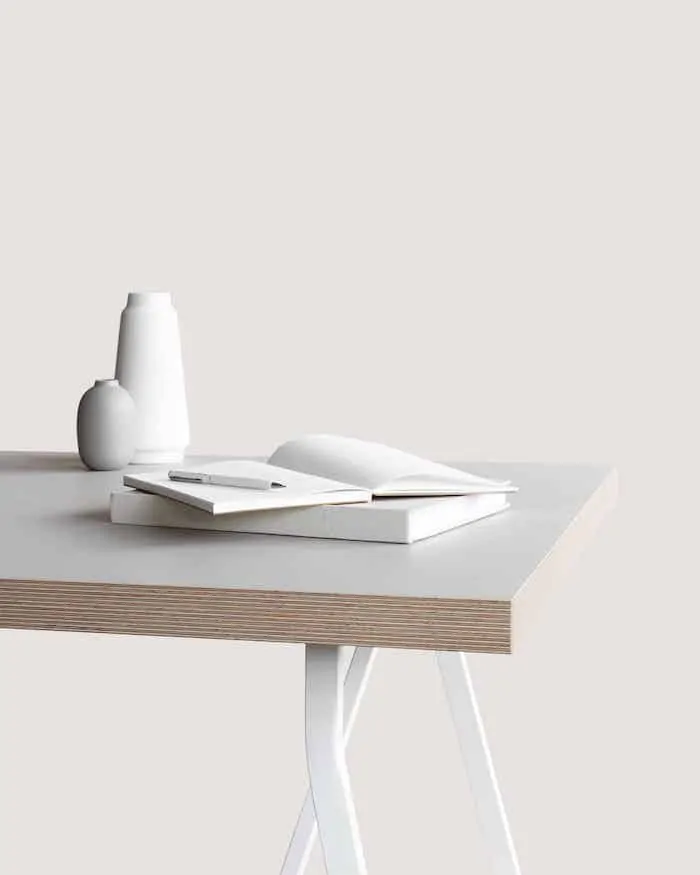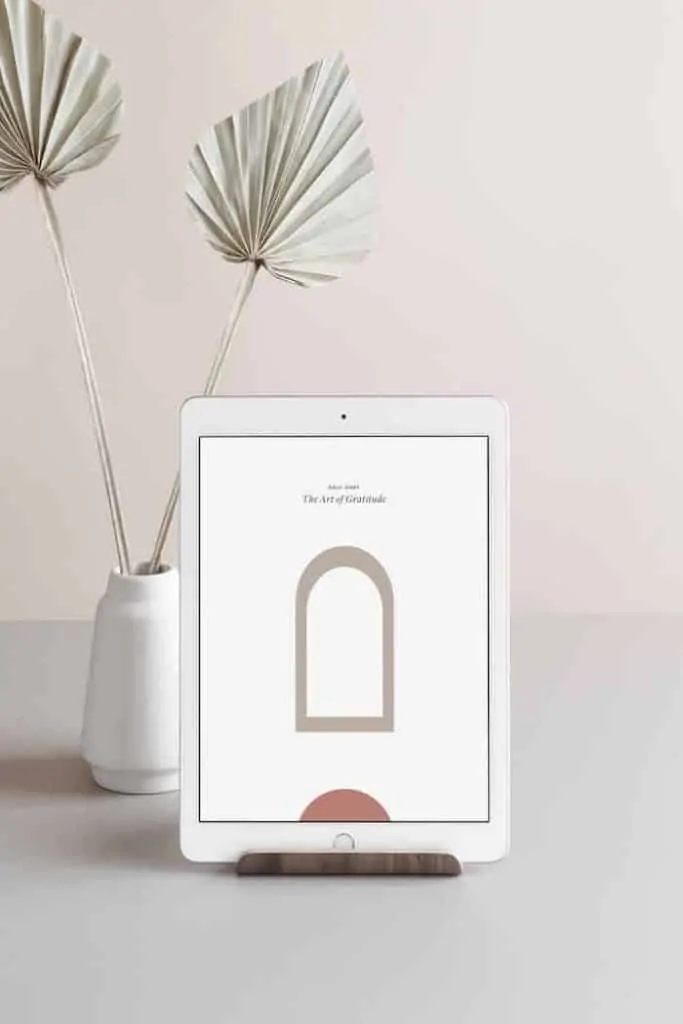
Practicing Gratitude
Practicing gratitude not only helps you cherish the good that has passed but also puts you in a better position to experience more good in the future.
The root of the word gratitude is the Latin term “gratia” which means grace, graciousness or gratefulness (depending on the context). People talk a lot about the benefits of being grateful. However, most have a superficial understanding of why and how to be thankful.
So we are breaking down the concept of gratitude in order to get to the root of why it’s worthy of adding to your repertoire of personal development tools.
How to practice gratitude
Gratitude is an emotion. It is a feeling of happiness triggered by the acknowledgment and appreciation of something that positively touches, moves, or impacts you. This is important to understand because, like most human emotions, it can’t always be easily turned on or off at whim.
If someone walked up to you and said “be disappointed, right now” you would struggle with that request. In order to feel disappointment your mind would have to search your memory for specific instances in which you were let down or your expectations weren’t met.
Similarly, you can’t be thankful without just cause. Mindlessly regurgitating mantras is an inauthentic exercise as it attempts to force you to feel something that you don’t. Just listing out a bunch of stuff in your gratitude journal won’t work either, if those experiences weren’t actually meaningful to you.
30-Day Guide to Gratitude
Cultivate a thankful mindset through this 40-page, Art of Gratitude Daily Journal and experience more happiness as a result.
You can cultivate gratitude, but your efforts should be rooted in calling to mind meaningful moments in which you were genuinely appreciative, being aware of when these moments take place in the present and anticipating future moments.
Sometimes nice things happen to you but it doesn’t automatically mean you care about or appreciate them. Moreover, at some point you will exhaust the number of past meaningful moments you can think of.
You can continue to reflect on those things but gratitude is similar to happiness in that the effect wears off over time. So, in order to be more thankful you need to experience more situations that you genuinely appreciate. This may go against popular gratitude tips, but it’s being realistic.

The 5 life-changing benefits of gratitude
When you incorporate thankfulness into your daily routine, you can be sure to see an increase in your feelings of joy and overall sense of well-being in the following ways:
- Increases your awareness of the good in your life
- Helps you adopt a more optimistic outlook
- Amplifies your feelings of enduring happiness
- Elevates your mental health and overall sense of well-being
- Empowers you to build stronger relationships with the people around you
The art of thankfulness
In order to continuously feel gratitude you’ll need more situations where good and meaningful things happen to you, and the mindfulness to recognize them when they happen. The main issue here is that sometimes good things are out of your control and may not happen on a regular basis.
To live your life in a way that helps you cultivate a state of enduring thankfulness means putting yourself in a better position to have good and meaningful things happen to you. This is within your control and what we call the art of thankfulness.
When considering how to cultivate enduring thankfulness in a way that’s within your control, focus less on superficial wants and desires and more on designing a lifestyle that helps you maintain a perpetual state of meaningful pleasure. For example:
- knowing what matters most
- pursuing simple pleasures
- experiencing joy from anticipation
- being more mindful
All of the above are important because they require an understanding of what you deem to be good, pleasurable, and meaningful. Because if you don’t know what is significant to you, you won’t be able to recognize and appreciate these things when they happen.
We have a suite of best-selling personal development tools that we combined to help you master the art of thankfulness by being aware of, and creating, more good.
A Daily Gratitude Diary Amplifies and Extends Your Happiness
Our Gratitude Journal is your surefire way to cultivate gratefulness and life satisfaction in your everyday life. It not only helps you reflect on and appreciate your big wins and successes, but also the simple and smaller ones. Sharpening your mindfulness, it also helps you spot additional opportunities for growth and success.
Knowing what matters most
Minimalist living is a philosophy that addresses living with intention by focusing on what matters to you and eliminating the rest. To us, a minimalist lifestyle entails three things: awareness, clarity, and focus.
First, you need to have awareness about yourself and how you perceive the world. Then comes clarity — about who you are, what you believe in, what you do and do not care about, etc. Clarity allows you to focus so you can prioritize and efficiently allocate your time, effort, and resources to what matters most.
The result of developing awareness, clarity and focus, is that you’ll have an incredible ability to simplify decision-making and hone in on what truly brings you joy. And your ability to identify and initiate joyful experiences, as mentioned, is key to gratitude.
Pursuing simple pleasures
Human beings have an inherent longing to survive and thrive which shouldn’t be ignored, as it is part of the evolutionary fabric. Theories such as Maslow’s Hierarchy of Needs suggest that there are a number of physiological, psychological, and social desires that are deeply ingrained in humans.
On the other hand, research has shown us that wanting and even receiving more of certain things won’t make you happier over the long run. If not kept in balance, desire is an emotion that can cause a lot of discontent in your life.
The hedonic treadmill is the theory that explains this: even after major positive situations (e.g. such as getting a new car) you will eventually get used to the stimuli and return to a base level of happiness.
Then, your expectations rise and you will end up wanting something more than what you currently have (e.g. an even newer car than the new car you just bought) which can lead to a perpetual cycle of dissatisfaction.
So what can be done to strike the proper balance between nurturing your innate needs and goals while not being tricked into the “rat race”? If money, success, and objects are superficial forms of happiness, what yields more significant and lasting levels?
One of the easiest ways to live with intention and practice gratitude is to indulge in and appreciate the simple little things. This happiness hack is a foundational element of positive psychology with research-backed studies starting to reveal more about how and why it works.
Here’s how you can incorporate this tip into your life:
- Read the latest research on simple pleasures so you can understand the science behind the claim and get a sense of the most common simple pleasures.
- Reflect on and write down your own list of simple pleasures. It can be as short or long as you want.
- Schedule a block of time (minimum 2 hours) where you can indulge uninterrupted in one or more of your simple pleasures.
- Save your list and periodically refer to it especially during times of annoyance, anxiety, and anger.
Much of his work has been lost but, as the father of the simple pleasure concept, it’s worth getting a primer on the life and ideas of Epicurus the philosopher. Here are two books to start with:
Experiencing joy from anticipation
Another way to bring about more feelings of joy in your life is to achieve it through anticipation.Germans have a word call Vorfreude that roughly translates to joyful anticipation or pre-joy in english.
Life may be too short to learn German — as Richard Porson, an 18th century English scholar, once quipped — but it’s definitely worth borrowing this word. It doesn’t matter if you are creating a trip itinerary or looking forward to your self-care routine, you can derive pleasure simply from foreseeing pleasure.
The New York Times discussed this phenomenon in “What a Great Trip! And I’m Not Even There Yet.” Using trip planning as an example the article reports:
Turns out, there is an art to anticipation. Savoring, said Elizabeth Dunn, an associate professor of psychology at the University of British Columbia and a leading happiness researcher, is an active, not passive, process.
“It’s better to immerse yourself,” she said. Reading novels and poetry, watching films and television programs, browsing fashion and design blogs that are either from or about the place you plan to visit encourages you to not only learn about your destination, but to dream, providing some concrete details for your mind to latch on to.
It may sound counterintuitive, but this building up of positive expectations and excitement actually helps our minds smooth over any minor discrepancies if reality doesn’t quite measure up to the fantasy.
“We’re less likely to be bothered by these little holes if we build up our expectations ahead of time,” Professor Dunn said. “So go ahead and assume it’s going to be wonderful.”
Don’t let your life be just about getting from one end goal to another, but appreciate all of the moments in between. If you want more feelings of joy here are some tips on how you can achieve it through anticipation.

Savoring the journey
When you get what you want the feelings of happiness it brings are typically short-lived. This is why the proverb “life is a journey not a destination” is so meaningful. As we discuss, humans have a happiness set point — an average level of happiness that is almost always returned to no matter the good or bad that happens in life.
So it actually makes sense to put more energy into savoring the build up to the thing or experience you desire more than the actual thing or experience itself. As Arthur Ashe, tennis legend, once said “the doing is often more important than the outcome.”
Making time for daydreaming
You may assume daydreaming is a time waster or form of escapism best left to children, but that couldn’t be further from the truth. Daydreaming is an underrated activity and it’s time to include it in your personal growth toolkit, particularly if you want more pre-joy.
In “At last, scientific proof that daydreaming doesn’t mean you’re a flake,” a Quartz reporter interviews a colleague about their daydreaming routine.
“I’m only allowed to play out situations exactly like I’d want to them to play out, best-case scenario,” she explained.
“I’m not allowed to tell myself that these ideas are dumb, or that they’d never happen or that the subject matter is stupid.
I let myself think that if it’s my heart’s desire, it’s okay to dream about in that moment.”
The research-backed benefits of letting your mind wander in this way include: more motivation, increased creativity, greater cognitive control and, lest we forget, more joy and gratitude.
Frequently asking what if
Asking “what if” almost always reveals new ways of thinking, doing, or being. It’s one of the easiest ways to get excited about what’s to come because the question gives you freedom to imagine it.
Getting in the habit of asking what if questions breaks self-imposed limits about what’s doable. Instead of operating from a narrow or restricted point-of-view (that tends to stifle pre-joy), you’ll be eager to follow through on the fresh ideas you generate by brainstorming answers.
Just be sure to focus your what ifs on upsides and solutions to avoid undue worrying. It shouldn’t be a line of questioning directed towards the past (e.g. what if this never happened) but a way to broaden your scope of the future.
Managing expectations
When you yearn for something that isn’t realized it can lead to a negative emotion: disappointment. But you don’t have to let this emotion dampen your Vorfreude. You can decrease feelings of disappointment in your life by:
- thinking mostly about future events that are within your power to control
- being open-minded about the possible outcomes when you are thinking of the future
That way you aren’t completely caught off guard if something actualizes in a way that you didn’t anticipate (which is usually the case because you can’t predict the future)
Remember Professor Dunn’s research mentioned above and featured in the New York Times: anticipating positive things actually provides a bit of a buffer against negative feelings derived from potentially subpar outcomes.
Being more mindful
There’s a sure way to be happy that is taken straight out of the Stoic handbook – be more mindful about both the good and not so good experiences. When you find yourself in an awkward, agitating, or adverse situation, linger there just a bit longer than you normally would and meditate on the moment.
Because once you do pull out of that negative situation you’ll have a greater sensitivity to the seemingly small positive things that you typically take for granted. They won’t seem so trivial after all and you’ll start to cherish them as a simple pleasure.
This doesn’t mean you should initiate or invite unnecessary drama into your life. You don’t need to play into the extreme and put or keep yourself in a highly stressful or painful state just for the benefit of this exercise.
Instead, focus on the minuscule things that you give more energy to than is warranted by the way you react to them. It could be that silly situation you tried to ignore but still ended up allowing to turn your perfect day into a disaster or the awkward exchange that you fled from but had you feeling self-conscious for the next month.
When you run from your discomforts it keeps you from learning how to manage them and they end up having more impact on you than they should. You also lose sight of just how special the small pleasures are. It’s hard to truly appreciate things that you always have at your disposal.
Instant gratification often leads to perpetual dissatisfaction when you can’t get your way, and this is the antithesis to gratitude. Here’s how to be mindful of how the inability to be content can escalate to the extreme, so you can bring your desires back into balance:
- Live more in the present and appreciate the right now
- Keep social influences and external pressures in check
- Learn from adversity so you can better manage tough times
- Have patience and cultivate contentment
Summary of practicing gratitude
Gratitude, like other positive feelings, has many proven psychological, physical, and social benefits. But if you just go through the motion without understanding how this emotion actually works, you’ll miss out on these benefits.
Practicing gratitude is not a passive but an active emotional state. In addition to recognizing when good thing happen, you should also put yourself in a position to experience more good, pleasurable, and meaningful moments by learning the art of contentment.
Unfortunately a lot of gratitude resources miss the big picture by encouraging well-intentioned but overly simplistic exercises. However, it’s the combination of circumstances outside of your control, amplified by your own actions, that will lead to more happiness and thankfulness.
So here is a succinct definition of gratitude to consider:
Gratitude is a feeling of happiness that comes about when you are conscientious of how certain circumstances positively impact your life. Cultivating more gratitude depends on experiencing more good, pleasurable, and meaningful moments, that are worthy of thankfulness.
This requires understanding what’s good, pleasurable, and meaningful to you, recognizing when good, pleasurable, and meaningful things happen, and exerting some level of influence on your environment to increase their odds of occurrence.
30 days of thankfulness
We are a big fans of beautifully designed journals that inspire you to reflect and write down your feelings, however most gratitude journals we’ve found don’t provide a structured series of daily prompts based on sound research.
So we developed a journal that uses insights from scientific studies to help you incorporate gratitude into your daily routine and increase feelings of happiness as a result.
The Gratitude Journal is a compilation of 30 research-backed prompts and exercises that you can work on for just a few minutes a day, each day of the month. This one-month practice will:
- Increase your awareness of the good in your life
- Help you adopt a more optimistic outlook
- Amplify your enduring feelings of happiness
- Elevate your mental health and overall sense of well-being
- Empower you to build stronger relationships with the people around you
Instead of just repeating generic prompts over and over again throughout the journal, we provide you with short and simple but unique prompts that help you cherish the past and present, while also creating the future.
Just five minutes per day for 30 days can lead to life-changing benefits and a happier and healthier version of you.
Affiliate Disclosure: As an Amazon Associate, Minimalism Co earns from qualifying purchases.